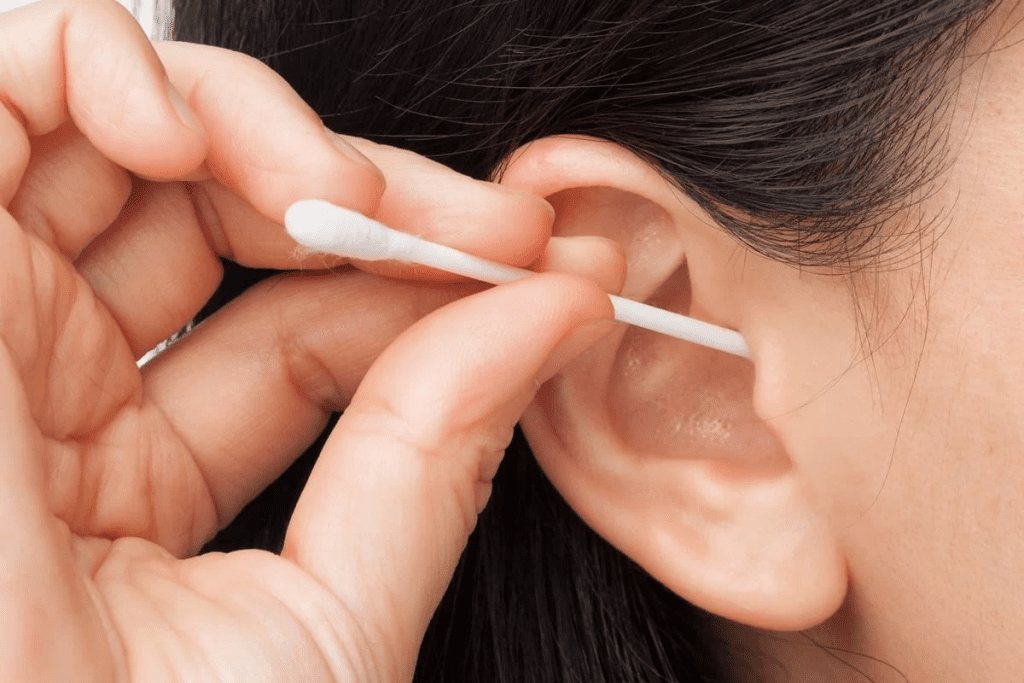Last Updated on November 14, 2025 by
Acute otitis media (AOM) is a common infection in early childhood. It affects 75% of children by school age. While many cases get better on their own, some signs show a more serious infection or complications.

It’s important to know these critical signs. They help prevent serious problems and ensure your child gets the right treatment. Look out for persistent high fever and severe ear pain. These can mean a more serious issue.
Acute otitis media, a common ear infection in kids, has key characteristics we must know. Understanding when it peaks and how it progresses helps us care for them better.
Ear infections mainly hit kids between 6 and 12 months old. The numbers drop after they turn two. “The peak incidence of AOM occurs during the first year of life, making it a critical period for vigilance and proper diagnosis,” pediatric guidelines say.
This age range is key for doctors to know. It helps them figure out how to diagnose and treat. Young kids are more at risk because of their developing bodies and immune systems.
About 80% of ear infections in kids get better on their own within three days without antibiotics. “The natural course of AOM is characterized by a high rate of spontaneous resolution, which guides our approach to management,” pediatricians note. This shows why watching and choosing when to use antibiotics is so important.
Knowing how ear infections usually go away helps doctors treat them wisely. They aim to help kids without overusing antibiotics. This way, kids get the care they need without too many treatments.
By knowing when ear infections are most common and how they usually get better, we can manage them better. This helps us catch any serious problems early and treat them right away.
It’s important to know the difference between the usual symptoms of otitis media and red flags. This helps in getting medical help on time. Acute Otitis Media (AOM) starts with common signs that can be tricky to spot.
Common symptoms of AOM include a runny nose, cough, and irritability. These signs are often seen in other colds and infections. But one-third of kids might not show these signs, making it hard to diagnose.
Having a runny nose and cough doesn’t always mean a serious infection. These are common in many colds. But if these signs get worse or new ones appear, it’s a cause for concern.
So, when do normal symptoms turn into red flags? It happens when they get worse or new, severe signs show up. For example, if a child gets much more irritable or has a high fever, it could mean a serious infection.
Key indicators that normal symptoms are becoming concerning include:
It’s vital for caregivers to watch these signs closely. If they see any red flags, they should get medical help right away. Early action can make a big difference and prevent serious problems.
The line between common symptoms and red flags can be blurry. But knowing the red flags helps in deciding when to see a doctor.
Fever in Acute Otitis Media (AOM) is common. But knowing the difference between normal and concerning fevers is key. Fever is our body’s way of fighting off infection. The way it acts can tell us a lot about how serious the infection is.
When dealing with AOM, knowing when to worry about fever is important. A fever above 102.2 °F (39 °C) is usually a sign of a serious infection. We need to watch the temperature closely and look at the whole situation.
The height of the fever matters, but so does how it reacts to treatment. For example, if a fever keeps going even after we use medicine, it might mean the infection is worse. In such cases, we might need to use antibiotics like ciprofloxacin. But we have to make sure the right dose is used, based on the patient’s needs and health history.
The length of time a fever lasts is also very important. A long-lasting fever can mean a complication or a more serious infection. If a fever goes on for more than 48 to 72 hours, it might mean the infection isn’t getting better with the first treatment. We then need to take a closer look and possibly change the treatment plan.
These signs are warning us to pay closer attention and possibly change how we treat the infection.

Knowing about these fever patterns helps doctors catch AOM complications early. By watching how fever acts and knowing when to worry, we can give better care to patients with AOM.
Ear pain is a key symptom of acute otitis media (AOM). But, the type of pain can tell us a lot about what’s happening. Knowing these signs helps us catch problems early.
Ear pain from AOM can be mild or very bad. Some pain is normal, but other signs might mean trouble. For example, if the pain is very bad, lasts a long time, or comes with fever or discharge, it could be serious.
To tell if the pain is normal or not, we look at a few things:
How ear pain reacts to over-the-counter (OTC) meds is key. If pain doesn’t get better with OTC meds, it might be a sign of a bigger problem.
It’s important to watch how well OTC meds work. If the pain doesn’t get better or gets worse, see a doctor. Signs that mean you should go to the doctor right away include:
Knowing how to read ear pain and its response to treatment is vital. Spotting warning signs early helps us act fast and avoid serious problems.
When checking for Acute Otitis Media, some signs can mean serious problems. We use a detailed otoscopic exam to spot these warning signs.
A big sign of trouble is moderate to severe bulging of the tympanic membrane. This shows there’s too much pressure in the middle ear. If not treated quickly, it could get worse.
Otorrhea, or ear discharge, is a big warning sign. It means the tympanic membrane might have torn, leading to infection or other problems.
Other visual indicators during an otoscopic exam can also warn of serious issues. These include changes in the tympanic membrane’s color or how it moves, and seeing air-fluid levels behind the eardrum.
Spotting severe infections or complications in AOM early is key. We need to watch for specific signs. These signs show a serious issue that needs quick medical help.
Children with AOM can be cranky, but severe irritability that goes beyond normal fussiness is a warning. This kind of irritability doesn’t go away and shows the child is in a lot of pain or discomfort.
It’s important to tell normal irritability from severe signs. Parents and caregivers should know their child’s usual behavior. This way, they can spot when the child is more irritable than usual.
Persistent vomiting and feeding difficulties can lead to dehydration and imbalances in electrolytes. These can make AOM worse. They might also show signs of serious problems like increased pressure in the brain.
Watching for these signs is very important, even more so in babies and young kids. Any signs of dehydration, like fewer wet diapers or no tears when crying, mean you need to see a doctor right away.
Lethargy and decreased responsiveness are big red flags that need quick medical help. They can mean a severe infection has spread or caused a serious problem like meningitis.
We must watch for any changes in how alert a child is. A child who is very sleepy, hard to wake, or not responding should see a doctor right away.

It’s important to know the warning signs of acute otitis media. This helps make sure kids get the right care. We talked about signs like fever, ear pain, and feeling very tired or sick.
Knowing these signs helps parents and doctors work together. This teamwork is key to avoiding serious problems. Giving the right dose of amoxicillin is also critical in treating otitis media.
Being alert to these signs can help prevent serious issues. If you see these warning signs, it’s important to get urgent care. This way, kids can get the help they need quickly.
Children between 6 and 12 months old are most affected. The incidence drops after two years.
Most cases clear up in three days without antibiotics.
Symptoms include a runny nose, cough, and irritability. Not all children show these signs.
Watch the fever’s height and how long it lasts. High or long-lasting fevers can mean a serious infection.
Severe pain or pain that doesn’t get better with over-the-counter meds might mean complications.
Look out for a bulging tympanic membrane and ear discharge. These are signs to see a doctor right away.
Watch for severe irritability, persistent vomiting, and lethargy. These are signs to get medical help fast.
Antibiotics are not always needed. But, if there’s persistent fever or severe symptoms, they might be necessary.
Treatment depends on the case. It can include waiting, antibiotics, or other steps based on symptoms.
Serous otitis media is when fluid builds up in the middle ear without an infection.
Amoxicillin dosage is 80-90 mg/kg/day, given twice a day. Always check with a doctor for the right dose and length of treatment.
Yes, ciprofloxacin ear drops are used to treat outer ear infections.
Subscribe to our e-newsletter to stay informed about the latest innovations in the world of health and exclusive offers!